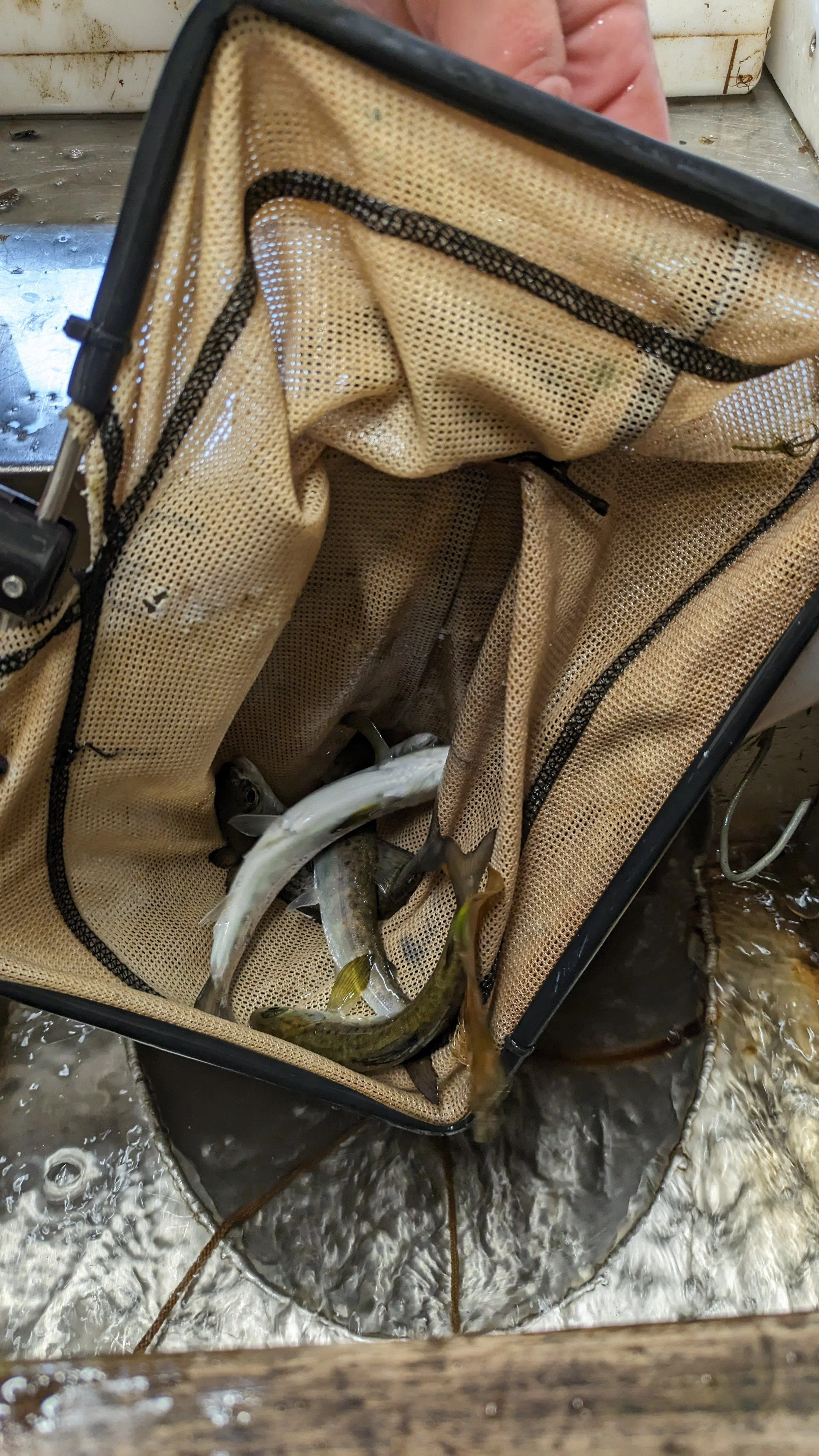Week 7 - Newport Research Facility
During my three-day visit to the Marine Institute's Newport Research Facility, I had the opportunity to engage in a range of research activities, interact with researchers, and learn about the vital work being conducted to understand and protect our marine ecosystems. From conducting operational welfare checks on ranched smolts to analyzing historic salmon scales and discussing satellite tracking of Atlantic Bluefin Tuna, the experience was truly eye-opening and inspiring.
One of the highlights of my visit was participating in operational welfare checks of the 20,000 ranched smolts. This included measuring their weight and length and checking for the presence or absence of microtags (Marine Institute, 2021a). These checks are crucial for ensuring the health of the ranched population before their release alongside wild smolts in May.
At the Mill Stream and Salmon Leap traps, I assisted with monitoring salmon and trout parr and smolts migrating between Lough Feeagh and Lough Furnace (Marine Institute, 2021b). I learned how to take biometric measurements, such as length, and collect biopsy punches from trout. We counted and released all fish heading upstream or downstream of the traps twice per day, contributing to important data on fish populations in the area (Marine Institute, 2021c).
I was fascinated by the process of aging salmon scales and salmon and eel otoliths, including the crack and burn method (Marine Institute, 2021d). Examining scales from over 80 years of historic samples provided valuable insights into the long-term changes in salmon populations and the importance of maintaining such records for future research.
Another intriguing aspect of my visit was learning about the microchemistry of otoliths, including oxygen isotopes and temperature data (Marine Institute, 2021e). This research contributes to our understanding of fish migration patterns, habitat preferences, and the impacts of environmental changes on these species.
Interacting with Dr. Joshka Kauffman and his PhD students was an enlightening experience, as I learned about their work on evolutionary ecology and the genetic structure of wild salmon populations in the Burrishoole catchment (Marine Institute, 2021f). Dr. Kauffman's research is crucial for informing conservation and management strategies for this iconic species.
Additionally, I was introduced to the environmental monitoring techniques employed in the loughs and learned how to conduct manual weather recordings using historic weather devices (Marine Institute, 2021g). This hands-on experience emphasized the importance of continuous data collection for understanding long-term trends in our marine ecosystems.
My days at the Marine Institute's Newport Research Facility were filled with valuable experiences, insightful conversations, and a deeper appreciation for the critical work being carried out by researchers in the field of marine ecology (Marine Institute, 2021a, 2021f). From studying Atlantic Bluefin Tuna using pop-up satellite archival tags (PSAT) to investigating unusual mortality events in blue mussels, the facility's research efforts are making significant contributions to our understanding and conservation of marine ecosystems and species.



















